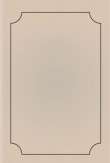قراءة كتاب Blackwood's Edinburgh Magazine — Volume 57, No. 351, January 1845
تنويه: تعرض هنا نبذة من اول ١٠ صفحات فقط من الكتاب الالكتروني، لقراءة الكتاب كاملا اضغط على الزر “اشتر الآن"

Blackwood's Edinburgh Magazine — Volume 57, No. 351, January 1845
their felicity. In the Paradiso he is more vague and general, and thence its acknowledged inferiority to the Inferno. But the images of horror are much more powerful than those of happiness; and it is they which have entranced the world. "It is easier," says Madame de Staël, "to convey ideas of suffering than those of happiness; for the former are too well known to every heart, the latter only to a few."
The melancholy tone which pervades Dante's writings was doubtless, in a great measure, owing to the misfortunes of his life; and to them we are also indebted for many of the most caustic and powerful of his verses—perhaps for the design of the Inferno itself. He took vengeance on the generation which had persecuted and exiled him, by exhibiting its leaders suffering in the torments of hell. In his long seclusion, chiefly in the monastery of Santa Croce di Fonte Avellana, a wild and solitary retreat in the territory of Gubbio, and in a tower belonging to the Conte Falcucci, in the same district, his immortal work was written. The mortifications he underwent during this long and dismal exile are thus described by himself:—"Wandering over almost every part in which our language extends, I have gone about like a mendicant; showing against my will the wound with which fortune has smitten me, and which is often falsely imputed to the demerit of him by whom it is endured. I have been, indeed, a vessel without sail or steerage, carried about to divers ports, and roads, and shores, by the dry wind that springs out of sad poverty."
In the third circle of hell, Dante sees those who are punished by the plague of burning sand falling perpetually on them. Their torments are thus described—
"Supin giaceva in terra alcuna gente;
Alcuna si sedea tutta raccolta;
Ed altra andava continuamente.
Quella che giva intorno era più molta;
E quella men che giaceva al tormento;
Ma più al duolo avea la lingua sciolta.
Sovra tutto 'l sabbion d'un cader lento
Piovean di fuoco dilatate falde,
Come di neve in alpe senza vento.
Quali Alessandro in quelle parti calde
D' India vide sovra lo suo stuolo
Fiamme cadere infino a terra salde."
Inferno, c. xiv.
"Of naked spirits many a flock I saw,
All weeping piteously, to different laws
Subjected: for on earth some lay supine,
Some crouching close were seated, others paced
Incessantly around; the latter tribe
More numerous, those fewer who beneath
The torment lay, but louder in their grief.
O'er all the sand fell slowly wafting down
Dilated flakes of fire, as flakes of snow
On Alpine summit, when the wind is hush'd.
As, in the torrid Indian clime, the son
Of Ammon saw, upon his warrior band
Descending, solid flames, that to the ground
Came down."
Cary's Dante, c. xiv.
The first appearance of Malebolge is described in these striking lines—
"Luogo è in Inferno, detto Malebolge,
Tutto di pietra e di color ferrigno,
Come la cerchia che d'intorno il volge.
Nel dritto mezzo del campo maligno
Vaneggia un pozzo assai largo e profondo,
Di cui suo luogo conterà l' ordigno.
Quel cinghio che rimane adunque è tondo
Tra 'l pozzo e 'l piè dell' alta ripa dura,
E ha distinto in dieci valli al fondo."
Inferno, c. xviii.
"There is a place within the depths of hell
Call'd Malebolge, all of rock dark-stain'd
With hue ferruginous, e'en as the steep
That round it circling winds. Right in the midst
Of that abominable region yawns
A spacious gulf profound, whereof the frame
Due time shall tell. The circle, that remains,
Throughout its round, between the gulf and base
Of the high craggy banks, successive forms
Ten bastions, in its hollow bottom raised."
Cary's Dante, c. xviii.
This is the outward appearance of Malebolge, the worst place of punishment in hell. It had many frightful abysses; what follows is the picture of the first:—
"Ristemmo per veder l'altra fessura
Di Malebolge e gli altri pianti vani:
E vidila mirabilmente oscura.
Quale nell' arzana de' Veneziani
Bolle l' inverno la tenace pece,
A rimpalmar li legni lor non sani—
* * *
Tal non per fuoco ma per divina arte,
Bollia laggiuso una pegola spessa,
Che 'nviscava la ripa d'ogni parte.
I' vedea lei, ma non vedeva in essa
Ma che le bolle che 'l bollor levava,
E gonfiar tutta e riseder compressa.
* * *
E vidi dietro a noi un diavol nero
Correndo su per lo scoglio venire.
Ahi quant' egli era nell' aspetto fiero!
E quanto mi parea nell' atto acerbo,
Con l' ali aperte e sovre i piè leggiero!
L' omero suo ch' era acuto e superbo
Carcava un peccator con ambo l'anche,
Ed ei tenea de' piè ghermito il nerbo.
* * *
Laggiù il buttò e per lo scoglio duro
Si volse, e mai non fu mastino sciolto
Con tanta fretta a seguitar lo furo.
Quei s' attuffò e tornò su convolto;
Ma i demon che del ponte avean coverchio
Gridar: qui non ha luogo il Santo Volto.
Qui si nuota altramenti che nel Serchio:
Però se tu non vuoi de' nostri graffi,
Non far sovra la pegola soverchio.
Poi l' addentar con più di cento raffi,
Disser: coverto convien che qui balli,
Si che se puoi nascosamente accaffi."
Inferno, c. xxi.
"———To the summit reaching, stood
To view another gap, within the round
Of Malebolge, other bootless


